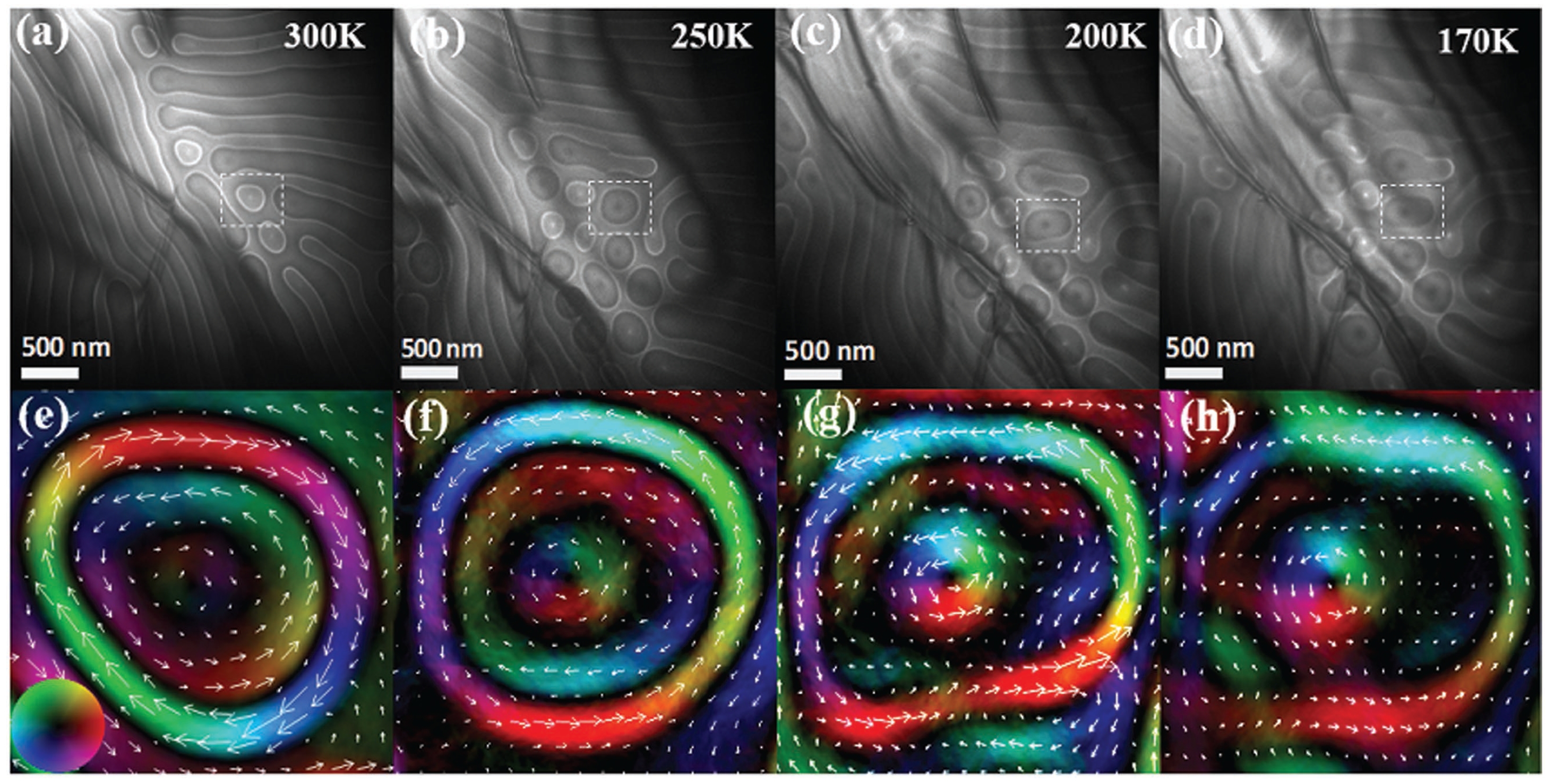
Observation of Various and Spontaneous Magnetic﹛Skyrmionic Bubbles at Room Temperature in a Frustrated﹛Kagome Magnet with Uniaxial Magnetic Anisotropy |
|
|
Magnetic skyrmions allow for the existence of discrete magnetic states which are significantly more energetically stable (per unit volume) than their single-domain counterparts. For this reason, it is envisioned that magnetic skyrmions may be used as bits to store information in future memory and logic devices, where the state of the bit is encoded by the existence or non-existence of the magnetic skyrmion. Fe3Sn2 is a noncollinear frustrated ferromagnet with a high Curie temperature Tc of 640 K, and shows a spin reorientation that the easy axis rotates gradually from the c axis to the ab-plane as the temperature decreases. The magnetic domain structures were imaged using a situ Lorentz transmission electron microscopy. The gradual transformation from a stripe domain structure into magnetic skyrmionic bubbles is clearly observed as the magnetic field increases from 0 to 860 mT. The underfocused LTEM image (Fig. 5) was taken at 300 K after turning off the external field of 700 mT by which the sample was magnetized to an intermediate state. The coexistence of different types of magnetic domains, e.g., magnetic bubbles, stripes, and dumbbell-like domains is clearly observed. It is particularly interesting that the winding directions of the inner and outer rings are opposite to that of the middle ring, indicating that the helicity reverses inside the bubbles. Our investigations demonstrate that Fe3Sn2 facilitates a unique magnetic control of topological spin textures at room temperature, making it a promising candidate for further skyrmion-based spintronic devices.
Fig. LTEM images of the magnetic domain structures taken at different temperatures after turning off the external magnetic field applied along c-axis. The field of 700 mT is not strong enough to saturate the sample magnetically. a每d) Stripe domains and skyrmionic bubbles coexist in the sample over the temperature range of 300 to 170 K, after turning off the magnetic field. The regions enclosed in the squares are the skyrmionic bubbles. e每h) The corresponding magnetization textures obtained from the TIE analysis for the bubble domains in the squares in panels (a)每(d). The inset of panel (e) shows the color wheel. The spontaneous skyrmionic bubbles with triple-ring structures and random helicities are observed. | |
